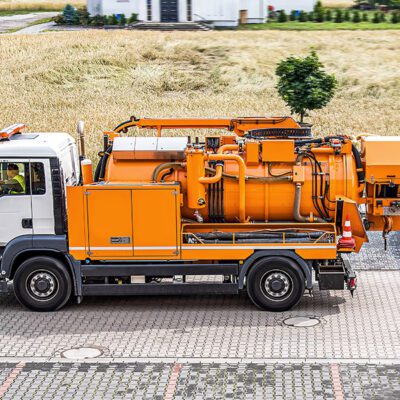Much positive progress has been made addressing scope 2 emissions, thanks in large part to renewable energy contracts and the use of renewable energy certificates (RECs). Scope 1 emissions, on the other hand, those direct emissions that your organization creates itself, are harder to address. Still, there’s no time like the present.
An old Greek proverb states, “The camel doesn’t look at its hump”—meaning it’s far easier to see and deal with others’ issues than your own. The same might be said about addressing your organization’s climate emissions in relation to scopes 1 and 2. Many organizations have made progress addressing scope 2 emissions (the indirect emissions created by your electricity supplier), thanks in large part to renewable energy contracts and the use of RECs. Scope 1 emissions, on the other hand (direct emissions that your organization itself creates) often lag behind because they can be trickier to address. We’ve outlined some of the reasons for that difference, and offer a few things to consider as you tackle the challenge.
The Scope 1 Struggle
Organizations often put off scope 1 mitigation for several reasons.
- Scope 1 can’t (yet) be mitigated with certification or credit options. While scope 2 emissions can be largely addressed by RECs, major reporting bodies, such as SBTi, discourage or prohibit the use of credits, offsets, and certificates to indicate reductions in scope 1 emissions. Instead, companies are required to reduce their own direct emissions through facility level changes. This leads to a second challenge, which is an impact on operations.
- Reducing scope 1 emissions will have impacts to operations. Because scope 1 emissions result from your company’s operations, reducing them often means changing the way you operate and how your teams communicate and coordinate. To take a simple example, if your business keeps its facilities at a certain temperature, you might need to consider a slightly lower or higher temperature to save energy and reduce emissions. Or your company might be at a stage where it’s considering locking in contracts for equipment that will last 20 years. Permanently reducing your scope 1 emissions might also mean purchasing equipment you’ve never purchased before or working with a new vendor or technology entirely. These changes often lead to a third challenge.
- Scope 1 mitigation might be cost additive. Where procuring renewable energy at scale might allow a company to achieve savings on its electricity spend with little or no money down, scope 1 solutions are often daunting because of the high capital expenditure required for new equipment, renovations, and retrofits. Savings can be achieved over time, but this large upfront cost is often the barrier to making progress on scope 1 reductions.
With all of these challenges, companies often don’t know where to start, and so procrastinate instead.
How to Get Going
Despite the challenges, and the natural-enough inclination to put challenging tasks off, there are several options to consider when reducing your organization’s scope 1 emissions can’t be postponed any longer.
Start with an inventory to find low-hanging fruit.
Take stock of the sources of your scope 1 emissions by magnitude, region, vendor, cost, etc. and get familiar with your company’s business as usual emissions profile.
Then identify what you can do fairly easily. A great example of this is reducing your dependency on natural gas by electrifying what you can and leaning into energy efficient systems. Other ideas:
- Explore cost effective options for replacing your natural gas HVAC systems with air source or geothermal heat pumps, which are typically 3-5 times more efficient than gas boilers.
- Your business might be located in a state where the cost of electricity is lower than average and the cost of natural gas is higher than average (for example Georgia, Missouri, Oklahoma, or Texas). These are places where electrification is more likely to make good sense for both emissions and cost savings.
- The Inflation Reduction Act (IRA) is extending the $1.80 per square foot tax deduction for businesses that demonstrate a 50% reduction in energy use through energy efficiency measures (such as installing the heat pumps discussed earlier). But be strategic: To optimize this move, your company will want to try to time the replacement of old systems with the normal capital replacement timeline.
- Work with a trusted advisor who can spend time assessing your facilities to identify quick wins and easy fixes where you might see instant energy savings.
Examine your vehicle fleet.
While it might seem like a huge undertaking, consider electrifying your vehicle fleet. Depending on the size of your fleet and its operations, it might be more feasible than it initially seems and could have a significant impact on your scope 1 emissions.
- Light duty vehicles are much easier to electrify and depending on how you use them, your company might be able to rely on the public charging network currently being built around the country instead of purchasing and installing your own charging infrastructure.
- Take advantage of the 30% federal tax credit for light duty electric vehicles up to $7,500.
- Light duty electric vehicles are expected to get cheaper over time, but even with the current upfront cost, you should expect to achieve savings on electricity use and maintenance costs with an electric vehicle.
- Savings will be even higher in states such as Oregon, Washington, Nevada, and Idaho where the cost of electricity is lower than average and the cost of gasoline is higher.
- To date, heavy duty fleets are much more difficult to electrify because the batteries for these vehicles are substantially heavier and harder to make. However, there are companies that are starting to sell these types of vehicles, if the larger cost fits into your long-term strategy.
- For certain fleet types with predictable routes, long idle times, and shorter distances, your organization will most likely need to install charging depots with DC fast charging capabilities. This will be an added upfront cost that must be factored into your long-term strategy, but could make huge impact over time.
- Look into vehicle lease options as well, as there are some vendors who offer fleet electrification and charging as a service at a premium.
If you use refrigerants, replace them.
Refrigerants are a source of direct emissions that cannot always be fully reduced to zero. However there are ways to reduce refrigerant emissions significantly.
- Typically, the best option is to stop using high-emissions refrigerants and replace them with refrigerants that have a lower global warming potential (GWP). These refrigerants are much less harmful to the planet and there are plenty of new affordable options on the market.
- Recycling refrigerants is a good step, but you can’t always do it. Refrigerant servicers might tell you there’s a risk of contamination when recharging equipment with used refrigerants. To prevent the need for purchasing too many new refrigerants, consider investing those dollars instead into upgrading your equipment to prevent refrigerant leakage and contamination.
- Know that not all refrigerants are easily interchangeable with other low GWP alternatives so talk to your servicers and refrigerant vendors to find out if there are more sustainable options for you.
Despite the associated challenges, all companies must address scope 1 to reach net zero goals. Coho’s advice is to start planning now. Developing a long-term strategy and beginning to budget for it immediately should give your organization the runway it needs to incorporate tax incentives, third party financing, and optimized procurement to reduce the overall scope 1 reduction costs as much as possible. We’re happy to help with the process from start to finish.



